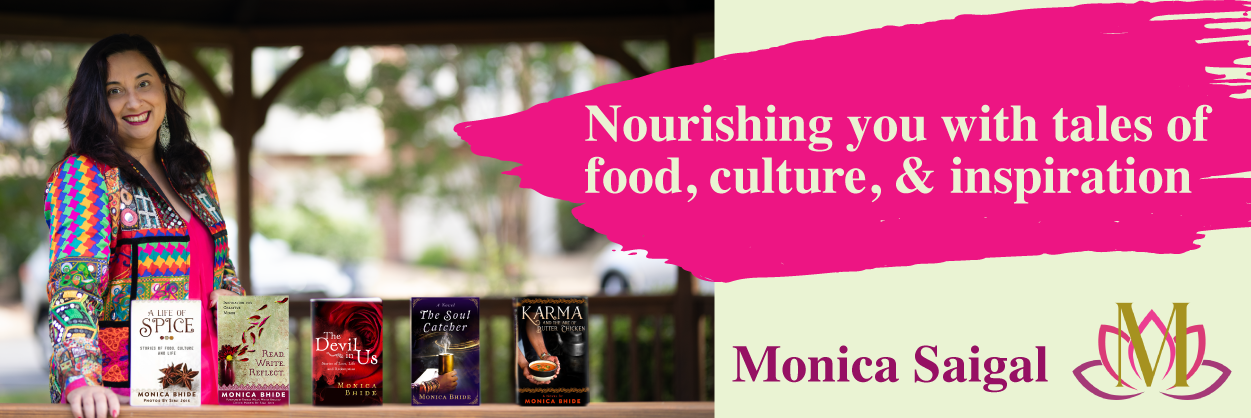Daphne is a wonderful and talented writer who had never tried to cook Indian food at home. And then she found curry leaves!
Please welcome my guest poster today – Daphne Howland as she cooks from Modern Spice
Curry Leaves
They say the nose and the brain are responsible for our sense of taste beyond basics like salty, sour, and sweet. Intricate mixtures, like perfumes, are inevitably mysterious because, unless one is an expert, no single trait is easily revealed. The aromas of Indian food are enigmatic this way. Lemon? Pumpkin seeds? Grass? Lime? Sometimes you can identify this or that spice, but it is the headiness of the whole that satisfies.
It's not always wise to demystify something you love, but in Modern Spice Monica has made cooking with Indian spices simple and irresistible. To follow her recipes, you will need spices, not from a pre-mixed grocery-store jar of “curry spice,” but from individual pots, jars, envelopes, and bags of seeds, leaves, pods, and powders. In most towns in America, that will take a special trip to an Indian market, like Masala Mahal in South Portland, Maine, near where I live. I didn't go to get lemon, pumpkin seeds, grass or lime – but to get curry leaves. Lemon, pumpkin seeds, grass and lime were just what the dark green, almost leathery little leaves smelled like to me, my nose and my brain trying hard to fathom them.
The leaves on their thin stems were delicately packed in small plastic bags, kept in the store's large refrigerated section. “What do they taste like?” I asked shop owner Mamta Punjabi, who would only give me a knowing smile. She told me she gets them from Hawaii, that they can't be grown in New England, that they are popular in south Indian cooking, and that they're best used as fresh as possible. But she declined to detail their flavor, saying only, “You'll see when you drop them in oil.”
She was right. The dusky, almost close-to-the-vest fragrance of curry leaves is released when they're cooked. They are lemony, but a bit nutty too.
Several recipes in Modern Spice call for curry leaves, which have nothing to do with what we think of as “curry” mixture (although they are added to many curries). I used them as called for in Beef Stewed with Coconut, where, like a youngest sister at the dinner table, they got a bit lost in the crowd of other clamoring flavors. It was when I prepared the Brussels Sprouts, Leeks, and Curry Leaves, taking advantage of the fresh leeks and great stalks of brussels sprouts popping up in the farmers market here, that the leaves' full power was more obvious. I scented my kitchen with not just the magical leaves and the leeks, but also the recipe's black mustard seeds, a pinch of asafetida, turmeric, coriander, and peanuts. Chopped and sautéed, the sturdy New England brussels sprouts gave in to this collective force, to their great benefit.
Like sage leaves and unlike bay leaves, curry leaves can be eaten once they've have collapsed or wilted from cooking, having done their part to add to the mystery of your dish.
About Daphne
Daphne Howland is a freelance journalist and essayist based in Portland, Maine. Her work has appeared in The Christian Science Monitor, The Dallas Morning News, Real Simple magazine, and several other local and national publications and websites. She covers a variety of topics and was a 2009 National Endowments for the Arts Fellow in arts journalism. You can reach her at howlanded [at] yahoo.com


Such a beautifully written piece, Daphne. You really captured the essence of cooking with curry leaves. They have such an evocative smell you never forget.